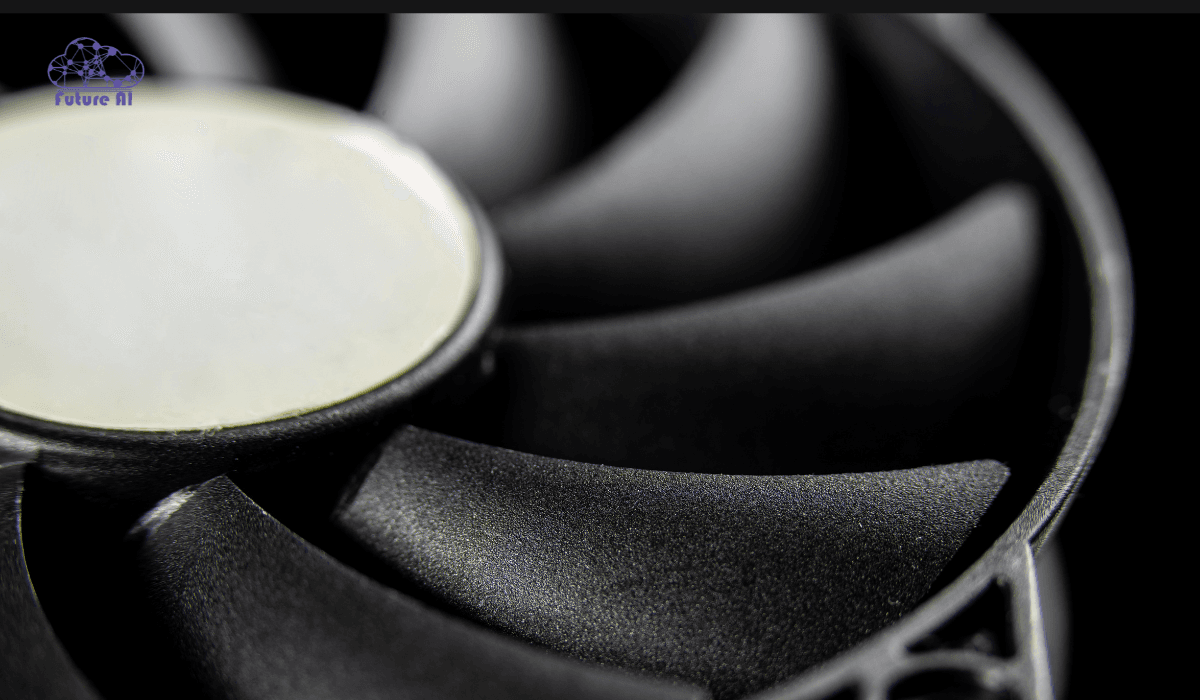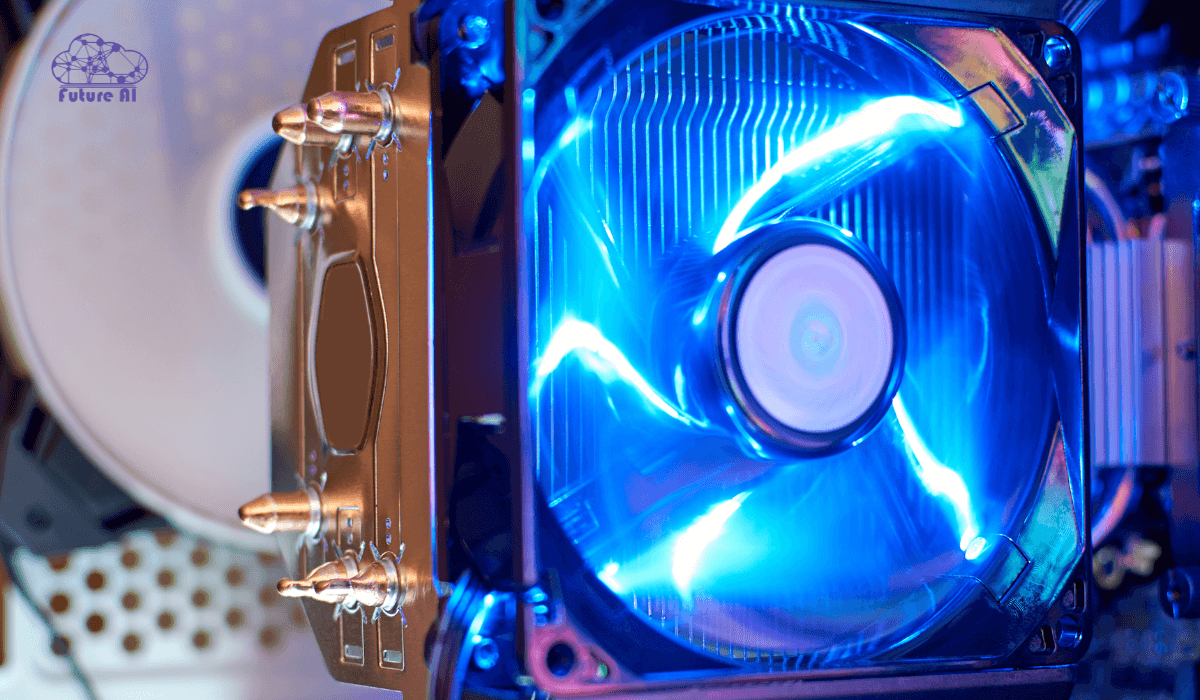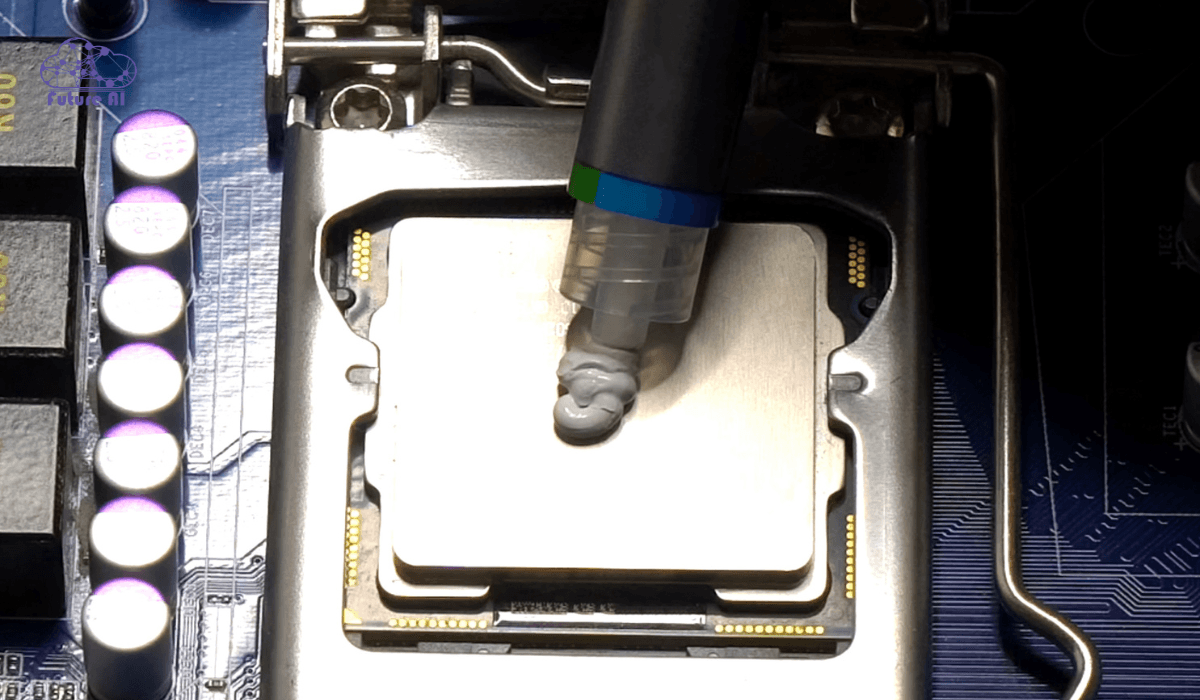Ever worried your CPU might be running too hot even when you’re just browsing the web or watching videos?
You’re not alone.
Whether you’ve just built your first PC or you’ve had your laptop for a while, knowing what temperature your CPU should be running at is crucial.
What Temp Should My CPU Be? A Comprehensive Guide to Safe CPU Temperatures
Your CPU is the heart of your computer, and just like any engine, it needs to stay within a safe temperature range to perform well. Let it get too hot for too long, and you could run into anything from slowdowns to serious hardware damage.
In this guide, we’ll break down exactly what “normal” CPU temperatures look like. Plus, you’ll learn how to check your temps, what to do if they’re too high, and how to keep everything running cool and stable over time.
What Is a CPU Temperature?
At its core, CPU temperature refers to the amount of heat your processor generates while it’s running. Just like any electronic component, your CPU produces heat as it works whether it’s idling, loading a webpage, or rendering a 4K video.
This temperature is measured in degrees Celsius (°C), and it fluctuates based on what your system is doing. For example, browsing or watching videos might keep it cool, while gaming or multitasking can heat things up quickly.
Most modern CPUs come with built-in thermal sensors that allow users to monitor these temperatures in real time using tools like Core Temp, HWMonitor, or MSI Afterburner.
Why Monitoring CPU Temperature Is Considered Important
Keeping an eye on your CPU’s temperature is essential for long term system health. Here’s why it matters:
- Performance Drops (Thermal Throttling): When your CPU gets too hot, it will automatically slow down to protect itself, resulting in lag or stutters during use.
- Hardware Lifespan: Excess heat can shorten the lifespan of your CPU and surrounding components like the motherboard or power delivery system.
- System Crashes: Unchecked high temps can lead to random shutdowns, blue screens, or even total system failure.
- Overclocking Risks: If you’ve manually boosted your CPU’s performance, high temps can be even more dangerous without proper cooling.
In short: monitoring your CPU temp = peace of mind + better performance.
What Normal CPU Temperature Ranges You See
Understanding what’s “normal” for your CPU can help you avoid overheating issues and keep your system running smoothly. These temperature ranges vary depending on the CPU model, workload, and cooling setup. Let’s break it down:
Idle Temperatures
When your system is turned on but not doing much like sitting on the desktop or browsing lightweight websites and this is considered idle.
Typical idle CPU temperature ranges:
| CPU Type | Normal Idle Temp Range |
| Modern Intel CPUs | 30°C – 45°C |
| Modern AMD Ryzen CPUs | 35°C – 50°C |
| High Performance Laptops | 40°C – 55°C |
Note: Laptops usually run warmer at idle due to compact cooling solutions.
If your CPU temperature consistently idles above 60°C, especially in a cool room, it may indicate a deeper issue (e.g., poor airflow, dust buildup, or too many background processes).
Under Load (Gaming/Heavy Tasks)
When your CPU is under pressure like during gaming, 3D rendering, or video editing it’s expected to heat up.
Normal under load CPU temperature ranges:
| CPU Task | Safe Load Temp Range |
| Gaming | 60°C – 85°C |
| Heavy multitasking/rendering | 70°C – 90°C |
| High end laptop CPUs | 80°C – 95°C |
Modern CPUs are built to handle high temps during spikes, but if your CPU stays near or above 90°C for long periods, it’s a red flag.
Maximum Safe Temperatures
Every CPU has a thermal ceiling. Exceeding this temperature can lead to thermal throttling or even automatic shutdown to prevent damage.
| CPU Family | Max Safe Temperature (TJunction) |
| Intel Core i7/i9 | ~100°C |
| AMD Ryzen Series | ~95°C |
| Intel Mobile CPUs | ~100°C |
You can find your specific CPU’s max temp on the manufacturer’s site (Intel ARK or AMD Product Pages).
If your CPU is constantly close to its thermal limit, it’s time to check your cooling, repaste the CPU, or reduce background activity.
Still Wondering What’s “Too Hot” for Your CPU?
Pushing the limits can shorten your CPU’s life. Learn what temperatures are safe and how to cool your system effectively to keep performance strong and stable.
Quick Tip: Use tools like HWInfo, Core Temp, or NZXT CAM to monitor real time CPU temps and set alerts if they go beyond safe levels.
What Affecting CPU Temperature: 4 Factors You need to Remind
Your CPU’s temperature isn’t just about the processor itself it’s influenced by several external and internal factors. Understanding these can help you better manage heat and keep your system running efficiently.
1. Ambient Room Temperature
The temperature of the room where your computer lives plays a surprisingly big role in CPU temps. If your room is warm like during summer or in a stuffy space. Your CPU will naturally run hotter because it’s drawing in warmer air for cooling.
- Tip: Try to keep your workspace cool and well ventilated. Even a small drop in room temperature can lower your CPU temps by several degrees.
2. Cooling Solutions (Air vs. Liquid Cooling)
How your CPU gets cooled matters a lot.
- Air Cooling: Most PCs use air coolers with fans and heat sinks. They’re reliable and easier to maintain but can struggle under heavy loads or in cramped cases.
- Liquid Cooling: More advanced and efficient, liquid cooling systems circulate coolant to move heat away from the CPU faster. These systems are great for overclockers or high performance builds but require more maintenance.
Your choice here impacts how low your CPU temps can go, especially during intensive tasks.
3. Thermal Paste Quality and Application
Thermal paste is the “glue” between your CPU and cooler, filling microscopic gaps to improve heat transfer.
- Using high quality thermal paste and applying it correctly can lower temps by several degrees.
- Over time, thermal paste can dry out or degrade, reducing its effectiveness.
- Tip: If your CPU temps are unusually high, consider cleaning off the old paste and reapplying a fresh layer.
4. Dust and Airflow in the System
Dust buildup inside your laptop or PC is a silent CPU temperature killer.
- Dust can clog fans and vents, blocking airflow and trapping heat.
- Poor cable management or blocked air paths can restrict airflow, causing heat to build up.
- Regular cleaning and organizing cables inside your case can dramatically improve cooling efficiency.
Keeping these factors in check can make a big difference in maintaining healthy CPU temperatures and prolonging your system’s life.
How to Monitor Your CPU Temperature with Just 3 Easy Ways
Keeping an eye on your CPU temperature is the first step to preventing overheating and maintaining a healthy system. Luckily, there are several easy ways to do this. Whether you prefer built-in tools or third-party apps.
1. Built-in BIOS/UEFI Tools
Most modern computers let you check CPU temps directly from the BIOS or UEFI firmware interface before your operating system even boots up.
- To access it, restart your computer and press the setup key (usually Del, F2, or F10) during startup.
- Inside the BIOS/UEFI, look for a section called Hardware Monitor, PC Health, or System Status.
- Here, you’ll find live temperature readings straight from your motherboard sensors.
This method is reliable because it measures temps without background software interference. However, it’s less convenient for continuous monitoring during regular use.
2. Third-Party Software (e.g., HWMonitor, Core Temp)
For real time temperature monitoring while you’re using your computer, third party apps are your best bet. Popular options include:
- HWMonitor: Displays temps, voltages, and fan speeds for almost all hardware components.
- Core Temp: Focuses on CPU temperature with detailed per core readings.
- Speccy: Offers a clean overview of your system’s health including temperatures.
These apps are free, easy to use, and update temperatures live, making it simple to spot overheating during gaming, streaming, or heavy workloads.
3. Interpreting Temperature Readings
Knowing the numbers is just the start and you also need to understand what they mean.
- Idle temps: Typically between 30°C and 50°C depending on your CPU and cooling.
- Under load: Can safely rise to around 70°C to 85°C during gaming or heavy tasks.
- Critical temps: Anything approaching or above 90°C should raise a red flag. This could indicate cooling issues or risk of damage.
Keep an eye on trends: If your CPU temperature jumps suddenly or stays high for no clear reason, it’s time to investigate further.
With these tools and knowledge, you’ll be empowered to keep your CPU running cool and your system stable.
Simple Yet Effective Tips to Maintain Optimal CPU Temperatures
Keeping your CPU at a healthy temperature isn’t just about reacting to problems, a little proactive care can make a huge difference. Here are some practical tips to help you maintain optimal CPU temps and extend your laptop or PC’s lifespan.
Regular Cleaning and Maintenance
Dust and debris buildup inside your computer can seriously hinder cooling performance.
- Make it a habit to clean your PC or laptop every few months.
- Use compressed air to blow dust out of vents, fans, and heat sinks.
- For laptops, carefully clean intake and exhaust vents to ensure air flows freely.

Regular cleaning keeps your cooling system working efficiently and prevents overheating caused by clogged airflow.
High Temps? Dust Might Be the Culprit!
Even a well-functioning CPU can overheat if it's clogged with dust. Follow our step-by-step CPU cleaning guide to keep your system running cool and smooth.
Ensuring Proper Airflow
Good airflow is essential to move heat away from your CPU and other components.
- Keep your computer in a well-ventilated area, avoiding confined spaces like crowded desks or soft surfaces like beds or couches.
- Organize cables inside your PC case to minimize airflow obstruction.
- For laptops, consider using a cooling pad to improve air circulation underneath.

Optimized airflow helps your cooling system do its job and keeps temperatures down.
Upgrading Cooling Solutions
If your CPU consistently runs hot, upgrading your cooling hardware can offer significant benefits.
- For desktops, consider switching from stock coolers to high performance air coolers or liquid cooling systems.
- In laptops, options are limited but investing in a quality cooling pad or external fan can help.

Better cooling solutions reduce heat buildup and provide more stable performance, especially during demanding tasks.
Applying High-Quality Thermal Paste
Thermal paste acts as the bridge between your CPU and its cooler, helping transfer heat effectively.
- Over time, thermal paste can dry out and lose efficiency, causing higher temperatures.
- Reapplying high quality thermal paste every couple of years or when you notice rising temps can improve heat transfer dramatically.
- If you’re comfortable opening your PC or laptop, follow a proper thermal paste application guide or seek professional help.

A fresh layer of good thermal paste can make a noticeable difference in CPU cooling.
By following these simple yet effective tips, you’ll keep your CPU cool and your system running smoothly for years to come.
Experts and Community Insights: Well-Rounded Approach to Keeping Your CPU Temperatures in Check
When it comes to managing CPU temperatures, learning from experts and the tech community can provide valuable, real world advice beyond technical specs.
What the Experts Say
Leading hardware reviewers and engineers consistently emphasize the importance of monitoring CPU temps and maintaining proper cooling.
- Tech reviewers like those from Tom’s Hardware and Linus Tech Tips often recommend keeping your CPU under 80°C during heavy loads to maximize longevity.
- Engineers stress that thermal throttling, where CPUs reduce performance to avoid damage, can kick in above safe temperature thresholds, negatively impacting user experience.
- Many experts suggest investing in quality cooling solutions and thermal paste to ensure stable performance, especially for gaming and content creation workloads.
These insights underscore the balance between performance and protection that knowing your CPU’s temperature helps you avoid costly damage.
Community Voices and Experiences
Online communities like Reddit’s r/buildapc, r/techsupport, and Linus Tech Tips forums are treasure troves of practical advice and troubleshooting tips from everyday users.
- Many users report that dust buildup and neglected maintenance are the most common causes of unexpectedly high CPU temps.
- Several users have shared success stories about how upgrading from stock coolers or switching to liquid cooling brought their temps down by 10-20°C.
- Discussions often highlight software culprits background processes and malware causing CPU spikes which can be caught and fixed with monitoring tools.
This collective wisdom from fellow users can help you identify and fix your CPU temperature issues quickly and cost effectively.
Pro Tips from the Community
- Regularly check and update your BIOS/firmware as manufacturers often release updates that improve thermal management.
- Use trusted software tools like HWMonitor or Core Temp to keep an eye on temperatures in real time.
- For laptops, consider using power management settings to reduce CPU load when not gaming or performing intensive tasks.
Common Queries about CPU and GPU Temperatures
Normal CPU Temperature While Gaming
During gaming or heavy workloads, a typical CPU temperature range is between 65°C and 85°C. Temperatures nearing 90°C or above may indicate inadequate cooling and could cause thermal throttling or hardware stress.
What Temperature Should My GPU Be?
For most GPUs, 60°C to 85°C is considered normal under load. Some high performance GPUs can safely run slightly hotter (up to 90°C), but sustained temperatures above that risk shortening GPU lifespan.
What Temperature Should My CPU Be? (Reddit Insights)
On forums like Reddit, users suggest keeping CPU temps:
- Idle: Around 30°C to 45°C
- Under Load: Below 80°C for desktops, slightly higher for laptops due to size constraints.
Community advice emphasizes good airflow and timely maintenance to maintain these temps.
What Temperature Should My CPU Be (Laptop)?
Laptop CPUs often run hotter than desktops. Typical temps:
- Idle: 40°C to 55°C
- Load/Gaming: 70°C to 90°C
If your laptop CPU exceeds 90°C regularly, it may need cleaning or improved cooling.
Using a Laptop? Your Safe Temp Range Might Be Different.
Laptops run hotter than desktops but how hot is too hot? find out the safe temperature ranges for laptop CPUs and when it's time to worry.
What Temperature Should My CPU Be for Gaming?
A good gaming CPU temperature is generally below 85°C. If it reaches or surpasses 90°C, consider upgrading your cooling system or optimizing airflow to avoid throttling
How to Check CPU Temperature
You can check your CPU temperature by:
- Accessing BIOS/UEFI during boot.
- Using third-party software such as HWMonitor, Core Temp, SpeedFan, or MSI Afterburner.
These tools show real-time temps and help diagnose overheating.
Good CPU and GPU Temps in Celsius
- CPU: Idle 30°C–45°C, Load 60°C–85°C
- GPU: Idle 30°C–50°C, Load 60°C–85°C
Consistently higher temperatures may indicate cooling problems.
Normal CPU Temperature Idle
At idle, your CPU temperature should typically be between 30°C and 45°C. Temps above 50°C at idle suggest background processes or cooling issues.
CPU Temps Are Hitting 87+ While Gaming, Which Cooling Part Should I Upgrade First?
If CPU temps hit 87°C or above during gaming, consider:
- Upgrading the CPU cooler, better air or liquid coolers improve heat dissipation.
- Improving case airflow, add or rearrange case fans.
- Reapplying thermal paste if it’s old or dried out.
Start with the CPU cooler upgrade for the most direct impact.
FAQ’s: What Temp Should My CPU Be
Is 90°C bad for CPU?
Yes, 90°C is considered quite high for a CPU, especially during normal use or light tasks. While some CPUs can handle short bursts at this temperature, sustained 90°C can reduce lifespan and cause thermal throttling.
What is a good temperature for a CPU?
A good CPU temperature typically ranges from 30°C to 50°C at idle, and up to around 70°C to 80°C under heavy load, depending on the CPU model and cooling solution.
Is 92 degrees hot for a CPU?
Yes, 92°C is hot for a CPU and generally close to the maximum safe operating temperature. It’s a warning sign to check your cooling system and airflow to prevent damage.
Is a 95°C CPU temperature bad?
95°C is dangerously high for most CPUs. Operating at this temperature consistently risks overheating, potential damage, and performance throttling.
Is 100°C CPU temp safe?
No, 100°C is at or above the critical temperature limit for most CPUs. Reaching 100°C means your CPU is overheating, and immediate action is needed to cool it down to avoid permanent damage.
Conclusion: Monitoring and Maintaining Safe CPU Temperatures Is Essential
Keeping your CPU temperature within safe limits is crucial for prolonging the lifespan of your hardware and ensuring smooth, stable system performance.
Take control of your system’s health today: start using reliable temperature monitoring tools, perform routine maintenance, and make the necessary upgrades.
Share your experience and results with the community to help others maintain their systems too. Your CPU will thank you with better performance and reliability.
Great article.